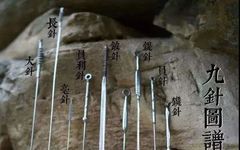



九针 (Jiǔ Zhēn)
The Nine Needles is a classification of ancient acupuncture instruments, consisting of nine types of needles: 镵针 (Chán Zhēn), 圆针 (Yuán Zhēn), 鍉针 (Lüē Zhēn), 锋针 (Fēng Zhēn), 铍针 (Pí Zhēn), 圆利针 (Yuán Lì Zhēn), 毫针 (Háo Zhēn), 长针 (Cháng Zhēn), and 大针 (Dà Zhēn). This classification is derived from the Huangdi Neijing (Yellow Emperor’s Inner Canon). Specific discussions on the shapes and uses of the Nine Needles can be found in texts such as Huangdi Neijing Lingshu: Jiuzhen Shier Yuan, Jiuzhen Lun, and Huangdi Neijing Suwen: Zhenjie Pian. The Huangdi Neijing Lingshu: Guanzhen states: “Each of the Nine Needles has its own purpose; their lengths and sizes vary, and they must be applied appropriately to treat diseases.” This indicates that their shapes and uses differ, and they should be applied according to the condition to alleviate illness.

1. The Creation and Application of the Nine Needles

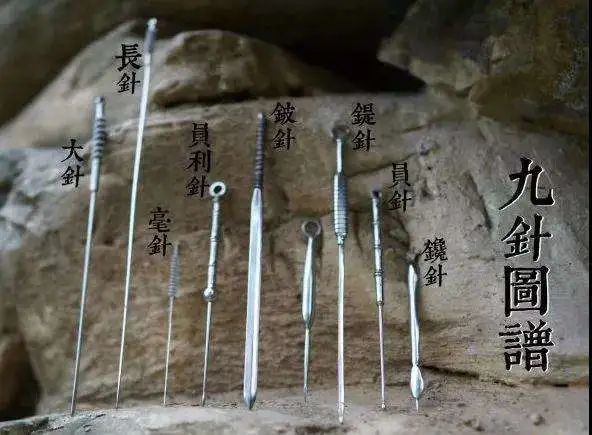
The creation and application of the Nine Needles began around the Bronze Age, with the earliest records found in the Neijing. By 1315 AD, illustrations of the Nine Needles appeared in the Jisheng Bacu. In 1968, four gold needles and five damaged silver needles were excavated from the tomb of Liu Sheng in Mancheng County, Hebei Province (buried in 113 BC), which were confirmed to be part of the Nine Needles. The creation of the Nine Needles laid an important foundation for the development of needling techniques.

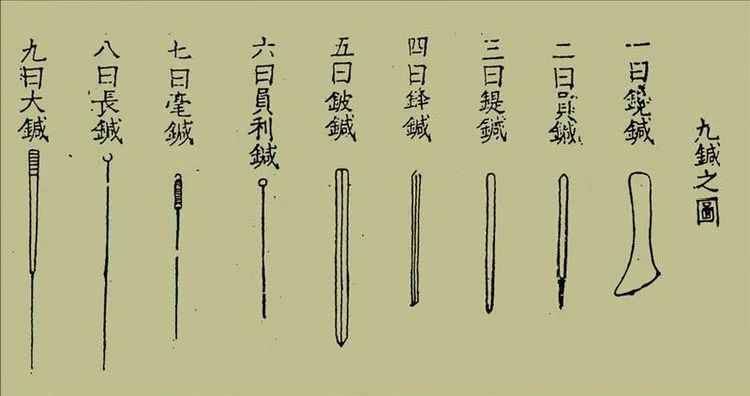
The Yizong Jinjian (Golden Mirror of Medicine) states: “The Nine Needles are named based on the great numbers of heaven and earth, starting from one and ending at nine, corresponding to the rhythms of heaven, earth, and humanity, and the nine orifices of the body, which connect the yin and yang, and the joints.”

2. Classification of the Nine Needles

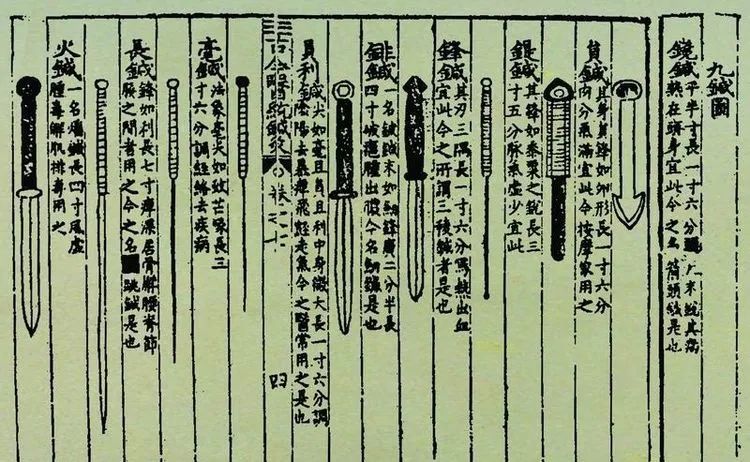
Needle Name Shape
镵针 (Chán Zhēn) Length: 1.6 inches, large head, sharp tip, not for deep insertion圆针 (Yuán Zhēn) Length: 1.6 inches, needle shaped like an egg鍉针 (Lüē Zhēn) Length: 3.5 inches, sharp tip like millet, rounded end锋针 (Fēng Zhēn) Length: 1.6 inches, three-edged blade, sharp tip铍针 (Pí Zhēn) Length: 4 inches, width: 2.5 lines, tip like a sword edge圆利针 (Yuán Lì Zhēn) Length: 1.6 inches, sharp like a mosquito’s proboscis, both round and sharp, slightly larger in the middle毫针 (Háo Zhēn) Length: 3.6 inches, sharp like a mosquito’s proboscis长针 (Cháng Zhēn) Length: 7 inches, long body, sharp tip大针 (Dà Zhēn) Length: 4 inches, sharp like a spear, slightly rounded tip

3. Needling Techniques: Tonification and Sedation

Huangdi Neijing Lingshu: Jiuzhen Shier Yuan: “When using needles, if there is deficiency, tonify it; if there is fullness, drain it; if it is stagnant, remove it; if evil is strong, weaken it.” Huangdi Neijing Lingshu: Jingmai: “If there is excess, drain it; if there is deficiency, tonify it; if there is heat, hasten it; if there is cold, retain it; if it is trapped below, moxibustion should be applied; if it is neither excess nor deficiency, treat it according to the meridians.” Huangdi Neijing Lingshu: Evil Qi and Zangfu Disease Forms: “If both yin and yang are deficient, do not use needles, but adjust with sweet herbs.”



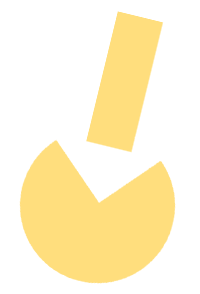 Click the link below to read
Click the link below to read
About medical consultation precautions in winter and spring
Notice for admission and hospitalization at Dushanzi People’s Hospital
Notice on strengthening hospital visitation and accompaniment management during the pandemic
Dushanzi People’s Hospital can now check nucleic acid test reports via WeChat without a medical card!

 Thank you for your shares, likes, and support!
Thank you for your shares, likes, and support!

